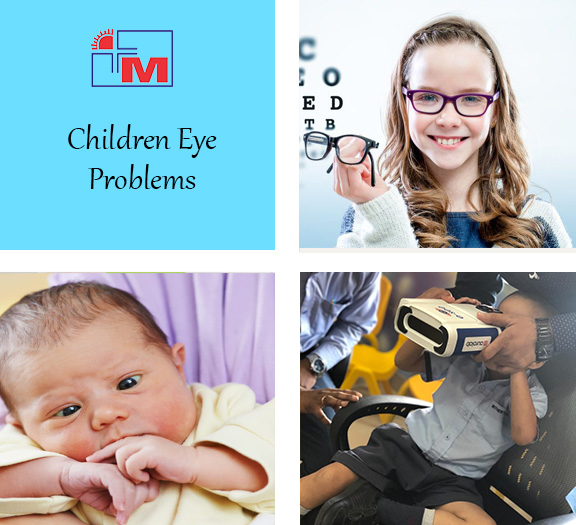
Children Eye Problems
Deals with eye problems in children. Children may not complain if they do not see out of one or both eyes. Sometimes the only clue may be poor performance in school as well viewing the blackboard at a very close distance. Hence all children need regular eye checkups at the time of starting school and right through their school years. Of the many eye problems in children, the most important are Refractive errors, Squint and Amblyopia. Adult patients suffering from squint and double vision are also examined and treated effectively.
Dr. Amit Gupta is a well known paediatric ophthalmologist offers his services for kids at Manocha Eye Hospital.
What are the Common Eye Diseases in children?
- Refractive errors
- Lazy eye disease
- Eye injuries
- Squinting of eyes
- Watering from the eye
- Eye allergies
A child should go for an eye checkup if the following symptoms are noticeable
- Crossed eyes
- Keeps object close to his eyes
- Not being able to see the blackboard at school
- Things looking blurry or funny
- Feeling an itching, burning or scratchy sensation in the eyes
- Injury to the eye
- One or both the parents wear glasses

Major eye problems in kids
What is Lazy Eye Disease?
This is a common eye disease affecting nearly 5-10% of children. In this disease a child cannot see well from one or both eyes due to uncorrected refractive error or squint. Unfortunately, Lazy Eye Disease goes undetected as, children do not complain and parents do not realize it. Appropriate treatment like a detailed mydriatric and cycloplegic refraction followed by patching of the normal eye.
What is Strabismus / Squint?
Strabismus is the medical term of a squint, a condition where the eyes point in different directions. One eye may turn inwards, outwards, upwards or downwards while the other eye looks forward.
Squints are common and affect about one in 20 children. They usually develop before a child is five years old, but can appear later, and adults can also be treated for the condition.
The most obvious sign of a squint is eyes that look in different directions. Squints can also cause: double vision; lazy eye(amblyopia) in young children where the vision is poor in the eye with the squint; and a squint can cause people to develop an abnormal position of the head.
If a squint is left untreated in young children, lazy eye (amblyopia) can develop. The vision in the affected eye gradually deteriorates because the brain ignores the weaker message being sent from that eye. A lazy eye can be treated up until about six or seven years of age, but it is important that it is treated as soon as possible.
Treatments for Squint
What is Lazy Eye Disease?
Most squints in children need to be assessed as soon as possible to ensure the vision is protected and to improve the chances of successful treatment.
Treatments include glasses and, occasionally, eye exercises. If your child has a lazy eye, they may need to wear an eye patch to improve the vision in the affected eye. Many patients may only need the condition monitoring reqularly.
In some cases, corrective surgery may be undertaken, most commonly to improve the appearance of the eyes, but sometimes to correct double vision or, in young children, to try and develop the co-ordination of the two eyes to work together for 3-D (depth) vision. Occasionally, surgery is done to improve an abnormal position of the head.
Squint surgery is a very common eye operation. It usually involves tightening or moving one or more of the outside eye muscles which move the eye to change the eye position. These muscles are attached quite close to the front of the eye under the conjunctiva, the clear surface layer. The eye is never taken out of the socket during surgery. Stitches are used to attach the muscles in their new positions.
Squint surgery is nearly always a day-case procedure, so you should be in and out of hospital on the same day. There are two kinds of squint operation - adjustable and non-adjustable. In adjustable surgery, which can be performed in older children and adults, the stitches can be adjusted shortly after the surgery, when the patient is awake.
Risks from surgery are rare, but there can be unpredictability in the exact position of the eyes after surgery and sometimes more than one operation will be needed.

